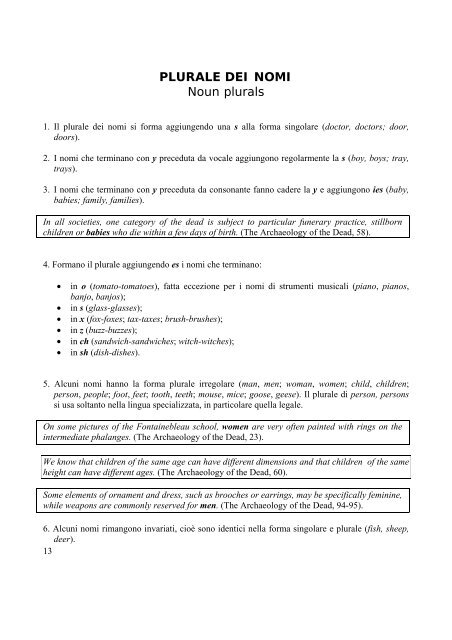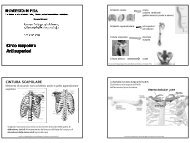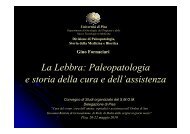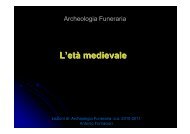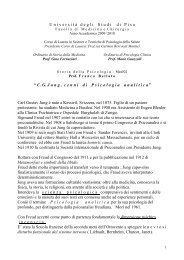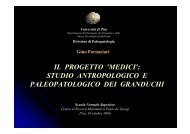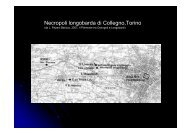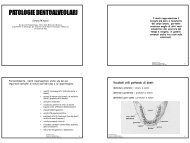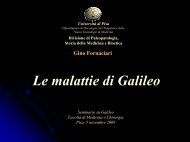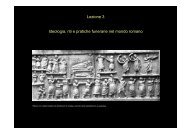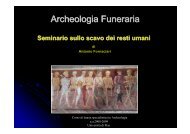Fondamenti della lingua inglese Laura Cignoni - Paleopatologia
Fondamenti della lingua inglese Laura Cignoni - Paleopatologia
Fondamenti della lingua inglese Laura Cignoni - Paleopatologia
Create successful ePaper yourself
Turn your PDF publications into a flip-book with our unique Google optimized e-Paper software.
PLURALE DEI NOMI<br />
Noun plurals<br />
1. Il plurale dei nomi si forma aggiungendo una s alla forma singolare (doctor, doctors; door,<br />
doors).<br />
2. I nomi che terminano con y preceduta da vocale aggiungono regolarmente la s (boy, boys; tray,<br />
trays).<br />
3. I nomi che terminano con y preceduta da consonante fanno cadere la y e aggiungono ies (baby,<br />
babies; family, families).<br />
In all societies, one category of the dead is subject to particular funerary practice, stillborn<br />
children or babies who die within a few days of birth. (The Archaeology of the Dead, 58).<br />
4. Formano il plurale aggiungendo es i nomi che terminano:<br />
in o (tomato-tomatoes), fatta eccezione per i nomi di strumenti musicali (piano, pianos,<br />
banjo, banjos);<br />
in s (glass-glasses);<br />
in x (fox-foxes; tax-taxes; brush-brushes);<br />
in z (buzz-buzzes);<br />
in ch (sandwich-sandwiches; witch-witches);<br />
in sh (dish-dishes).<br />
5. Alcuni nomi hanno la forma plurale irregolare (man, men; woman, women; child, children;<br />
person, people; foot, feet; tooth, teeth; mouse, mice; goose, geese). Il plurale di person, persons<br />
si usa soltanto nella <strong>lingua</strong> specializzata, in particolare quella legale.<br />
On some pictures of the Fontainebleau school, women are very often painted with rings on the<br />
intermediate phalanges. (The Archaeology of the Dead, 23).<br />
We know that children of the same age can have different dimensions and that children of the same<br />
height can have different ages. (The Archaeology of the Dead, 60).<br />
Some elements of ornament and dress, such as brooches or earrings, may be specifically feminine,<br />
while weapons are commonly reserved for men. (The Archaeology of the Dead, 94-95).<br />
6. Alcuni nomi rimangono invariati, cioè sono identici nella forma singolare e plurale (fish, sheep,<br />
deer).<br />
13


